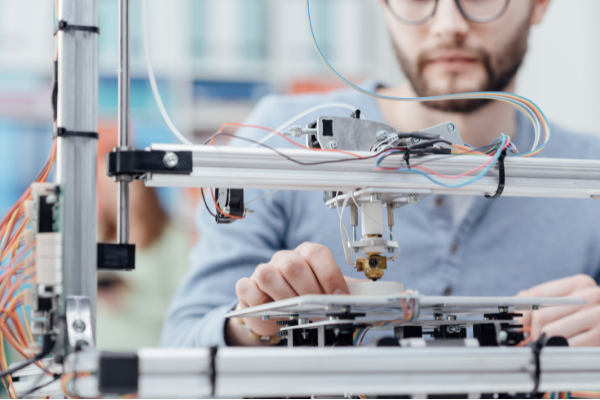"Doctor, did you print my cartilage?" Imagine asking your doctor this question. While it sounds futuristic, the idea is not as far-fetched as some may believe. Even if it is not your doctor who will take your bone-implant straight out of the 3D printer, start-ups in the field of biotechnology are already active in what is called regenerative medicine.
Among the scientists who are pushing these limits is Professor Liesbet Geris of the University of Liège (ULiège). She is among the winners of prizes awarded recently by the AstraZeneca Foundation for her work that could be summarised: "in pursuit of the form of bone-implant preferred by our cells."
The jury of the Scientific Research Fund and its Dutch-speaking counterpart, the FWO, chose to reward the young engineer for her prototype of a “gyroid” 3D implant.
The 'gyroid' structure
The jury based their decision on the work done by Geris and her team in creating numerical models based on thousands of data from previous transplants. This allowed her to develop a specific shape, which is easy to 3D print, in a natural material found in bones, calcium phosphate.
Thanks to this particular shape – a so-called "gyroid" structure – human cells are more attracted to this biomaterial than to the shapes that are currently in use. "It is a structure that is like a wave," Geris explains. "If you cut it, you see things that are a bit like waves. The waves are very easy for the cells to move because they always have something to cling to and then pull themselves as they go into the implant."
3D implants are specifically being developed for all patients who – for reasons of severe trauma, accident or illness – cannot count on a repair of bone tissue without an implant, because the "hole" is too large.
This could include, for example, people from whom a tumour has been removed, or who suffer from a genetic disease, such as neurofibromatosis, characterised in some cases by bone damage. Another scenario: a person who needs a dental implant, but who no longer has enough bone to hang it on.
Related News
- Ghent university spin-off develops bio-ink to 3D print human tissue
- Belgian researchers present contact lens that imitates the human iris
- Innovative projects harness the power of nature to make construction greener
In all these situations, a 3D printed element can be implanted; a biomaterial that will then have the mission of attracting the patient's cells so that they come to form new tissues around it, which in turn will then fully integrate into the patient's body.
Outside Belgium, and still in the field of regenerative medicine, an American biotechnology company has just exported artificial blood vessels for wounded Ukrainians suffering from vascular lesions. These are HAV, human cellular vessels: in other words, ready-to-use replacement vessels designed to repair, rebuild and replace damaged vessels.
The Humacyte company has exported its vessels, which are still in the clinical evaluation stage, to six hospitals in Ukraine, including those in Kyiv and Kharkiv. The shipment was made at the request of a Ukrainian surgeon who was familiar with this technique.
Although this treatment has not yet been approved for sale by the US' Food and Drug Administration (FDA), the units have been sent to meet the needs of those operating in the field, on a humanitarian basis. This type of vessel is currently being evaluated in several clinical trials and has already been used in more than 460 patient implantations.

